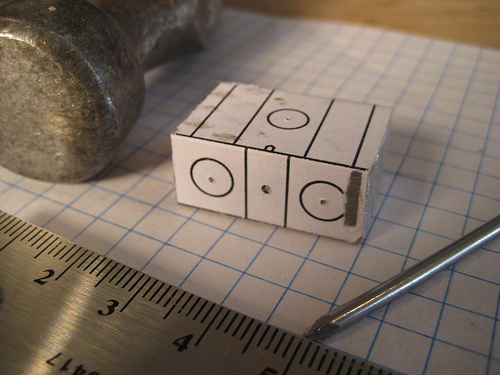Pretotyping #
Summary #
Pretotyping is a technique for using the minimum amount of resources to vet an idea.

(Photo: Zach Hoeken at Flickr)
Commentary #
The difference between a pretotype and a prototype is that the latter answers the question "Can we build it?" while the former answers "Should we build it?" Moreover, pretotyping focuses on using the minimum of resources (time, materials, effort).
Alberto Savoia has written a little booklet about pretotyping which is, itself, a pretotype. People told him he should write a book about pretotyping, so he wrote a booklet (in days, not months) to test out whether there is sufficient interest in the topic before he spends more time writing about it.
The booklet covers several different pretotyping techniques such as The Pinocchio, The Mechanical Turk, and the The False Door. Some of the others were interesting, but I did not find them nearly as actionable as these.
There's also a rich discussion about how most ideas fail and how to avoid falling into Thoughtland—a world in which all ideas are great and where there's no evidence to back up any claims.
The Pinocchio #
from a block to a real product
This technique is best for physical devices and is similar to dogfooding. It is named after the fairy tale character and is based on the story of how the Palm Pilot was created. One of the inventors Jeff Hawkins carried a wooden block and stylus in his shirt pocket and pretended to use it throughout the day. After some time, he realized that he would use this product, if it were actually built.
The Mechanical Turk #
replacing complex machinery with humans
The name of this method comes from an elaborate 1770 hoax about a chess-playing machine that was later revealed to be box with a human player concealed inside. Amazon Mechanical Turk service which facilitates crowdsourcing is named after this same device.
Savoia illustrates this technique with a story from IBM which was considering entering the voice-to-text market. Since building a working prototype would have been prohibitively expensive, IBM presented the appearance of a prototype to prospective customers (a computer monitor and microphone were on display, but the microphone led to an adjacent room where a typist converted the voice to text). The initial enthusiasm—on which IBM considered betting the company—dwindled as people realized the limitations of such a system (sore throat, lack of confidentiality, etc.)
The False Door #
measure the frequency of use of an unimplemented feature
This technique requires a certain amount of care. It is best illustrated in an online context: create an advertisement for your prospective product which leads people to a landing page explaining that the product is not finished, but here's what the price will be when it is released. Oh, and here's a place you can sign up to get a discount when it comes out.
Now you are equipped with three numbers:
- how many people saw your ad (impressions)
- how many people clicked on your ad (clicks)
- how many people signed up for your list (sign ups)
If the latter numbers are low, there's little chance your product, as stated will succeed. Fail fast and try again.
In some ways, this is similar to Eric Ries' Minimum Viable Product.
Meta #
My favorite part of Pretotype It is the fact that it is, itself, a pretotype.
See Also #
-
Pretotype It by Alberto Savoia for the booklet that is itself a pretotype.
-
Innovation at Google at InfoQ for a presentation about pretotyping.
-
The Pretotyping Manifesto for a list of principles modeled after the Agile Manifesto.
-
Wednesday Workout: Testing your assumptions at IWillTeachYouToBeRich where Ramit Sethi talks about the importance of actually testing your assumptions which is similar to pretotyping.
Updates #
2012-02-17 #
- Watch Alberto Savoia speak at Stanford about how pretotyping can be used to vet business models.